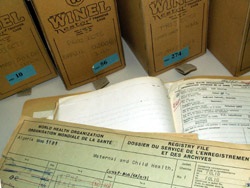
List of fonds
From the Archives of the Office International d'Hygiène Publique to the Archives of the Smallpox Eradication Programme, you can find the list of archives fonds currently available for consultation below.
Archives of the Office International d'Hygiène Publique (OIHP): 1907-1946
The Office International d'Hygiène Publique (OIHP) was created under the Arrangements signed in Rome on 9 December 1907 and was governed by the authority of the Permanent Committee composed of Delegates technically qualified in the field of health, designated by the Member States. Responsibilities of the Office were the administration of the international sanitary conventions, the service of epidemiological intelligence and collection and dissemination to Member States of information of general public health importance.
The Office was dissolved under the Protocol provided for OIHP in the Arrangements signed on 22 July 1946. Its epidemiological service was officially transferred to the Interim Commission of WHO on 1 January 1947.
This fonds is mainly made up of maritime health certificates, deratting certificates, correspondence with countries concerning the 1907 Rome arrangement, the Inter Allied Health Commission and administrative documents (contributions, staff regulations, ...). The health certificates are kept in paper form while the administrative documents are on microfilm.
- Reference code : ARC001
- Title : Records of the Office International d'Hygiène Publique (OIHP)
- Date(s) : 1907-1946
- Level of description : Fonds
- Extent and medium : 10 linear cm, microfilms - 30 linear cm, paper
- Accruals : No
- Conditions governing access : Open for consultation subject to the deadlines and restrictions in force at WHO
- Conditions governing reproduction : The archives are subject to WHO author's copyright.
- Finding aids : Paper inventory
- Rules or conventions : Descriptive note in conformity with ISAD(G) norm
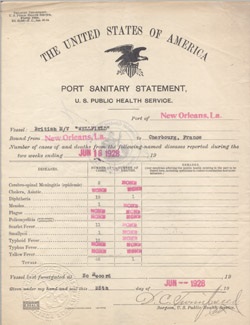
Archives of the United Nations Relief and Rehabilitation Administration (UNRRA): 1943-1946
At the first session of the Council of the United Nations Relief and Rehabilitation Administration, (UNRRA) held in 1943, it was agreed that health work would be one of its primary and fundamental responsibilities. In addition to combating epidemics and administering the international sanitary conventions, UNRRA's Health Division had to provide essential medical supplies and assisted a number of governments to rebuild and improve their health services.
UNRRA was dissolved under the Protocol provided for UNRRA in the Arrangements signed in New York on 22 July 1946. The functions entrusted to UNRRA by the International Sanitary Convention of 1944 and the International Sanitary Convention for Aerial Navigation of 1944 were transferred to the Interim Commission of WHO on 1 December 1946.
This fonds consists of microfilm copies of the UNRRA material related to the activities of the country missions responsible to its European Regional Office in London. The major part of UNRRA Archives is stored at the Headquarters of the United Nations in New York.
- Reference code : ARC002
- Titre : Records of the United Nations Relief and Rehabilitation Administration (UNRRA)
- Date(s) : 1943-1946
- Level of description : Fonds
- Extent and medium : 2 linear cm, microfilms
- Accruals : No
- Conditions governing access : Open for consultation in accordance with the deadlines and restrictions in force at WHO
- Conditions governing reproduction : The archives are subject to WHO author's copyright.
- Finding aids : Paper inventory
- Existence and location of originals : Most of the archives are kept at United Nations Headquarters in New York.
- Rules or conventions : Descriptive notice in conformity with ISAD(G) norm
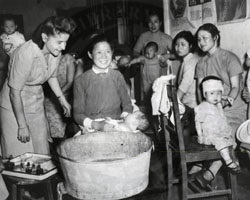
Archives of the League of Nations, Health section files: 1933-1946
Established in Paris in 1908, the International Health Office collected and distributed information from various health departments around the world, though it had no authority to act on its own. In 1922, and in accordance with Article 23 of the Covenant (concerning the prevention and control of disease), the League of Nations Health Committee and Health Section were established. However, these bodies were not associated with the Paris International Health Office because of certain disagreements between the United States of America and some Member States.
Under the leadership of Dr Ludwig Rajchman, Secretary of the newly established Health Committee and the Director of the Health Section, a health programme was initiated with the participation of non-member States such as Germany, the Soviet Union and the United States of America.
In addition to its information service, the Health Section acted as a link between national health administrations in many ways. For example, it extended its support to governments through the promotion of technical assistance, and it advised the Assembly and the Health Council on all international public health questions. For these reasons, it is considered one of the most successful auxiliary organizations of the League of Nations. As a result of the 1922 Warsaw Health Conference, plans were set up to control the spread of epidemic diseases in Africa, the Eastern Mediterranean countries, the Far East and the Soviet Union. Soon after, an Eastern Bureau of Epidemiological Information was established in Singapore, a State Serum Institute was set up in Copenhagen and a National Institute for Medical Research was installed in London. Through these institutions, several vaccines (for diphtheria, tetanus and tuberculosis, for example) were standardized worldwide.
After the demise of the League of Nations, the Health Organization became the World Health Organization (WHO), founded on 7 April 1948 and based in Geneva.
This fonds is made up of microfilm copies of the originals held in the archives of the League of Nations at the United Nations Office at Geneva. It comprises documents dealing in particular with social issues, women's rights, the protection of children, opium and opium trafficking, malaria, the epidemiological service and serums and biological products.
- Reference code : ARC003
- Title : Records of League of Nations : Health Section Files
- Date(s) : 1933-1946
- Level of description : Fonds
- Extent and medium: 1.5 linear m, microfilms
- Accruals : No
- Conditions governing access : Open for consultation subject to the deadlines and restrictions in force at WHO
- Conditions governing reproduction : The archives are subject to WHO author's copyright.
- Finding aids : Paper inventory
- Existence and location of originals : Held at the United Nations Office at Geneva
- Rules or conventions : Descriptive notice in conformity with ISAD(G) norm
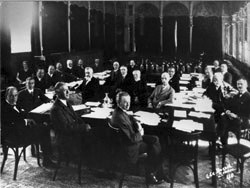
Archives of the Smallpox Eradication Programme: 1948-1986
In 1966, the 19th World Health Assembly requested the Director-General of WHO to initiate action to carry out a world-wide smallpox eradication programme. Historically, the programme remains one of the great achievements of WHO, as in 1980, the 33rd World Health Assembly endorsed the conclusions of the Global Commission for Certification of Smallpox Eradication that smallpox had been eradicated worldwide and that the return of the virus was unlikely. The documents describe the effort to control this endemic disease, which had already begun in 1948 and continued after 1980.
Photo-galleries: The Smallpox Eradication Programme - SEP (1966-1980)
The fonds consists of a wealth of correspondence, notes, decisions and discussions, essentially between the smallpox eradication unit and collaborators in different countries, as well as with national health authorities, laboratories and the medical profession as a whole. The fonds also contains documents from the Regional Offices, posters, photographs and films.
- Reference code : ARC006
- Title : Records relating to the Smallpox Eradication Programme
- Date(s) : 1948-1987
- Level of description : Fonds
- Extent and medium : 40 linear m, paper
- Accruals : No
- Conditions governing access : Open for consultation subject to the deadlines and restrictions in force at WHO
- Conditions governing reproduction : The archives are subject to WHO author's copyright.
- Finding aids : Paper inventory
- Rules or conventions : Descriptive notice in conformity with ISAD(G) norm
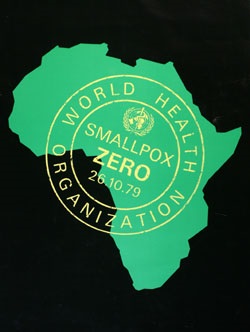
Archives of the Parasitology Collection of the Communicable Diseases Documentation Centre at WHO Headquarters: 1911-2003
This fonds, which was created by the Communicable Diseases Documentation Centre at WHO Headquarters, consists of documentary files made up of reports, articles and maps concerning control of parasitic diseases such as malaria, trypanosomiasis, schistosomiasis and onchocerciasis, as well as other less well-known diseases.
The documents are classified by parasitic disease. Within each disease, with some exceptions, a classification by each WHO Regional Office has been made, which is then subdivided by country. When it was in actual use, input for the collection was from documentalists and specialists in parasitology, who provided documents produced here at WHO or collected in the countries themselves.
- Reference code : ARC007
- Title : Collection on Parasitology (Malaria, Trypanosomiasis, Schistosomiasis, Onchocerciasis, General parasitology) of the Documentation Centre Communicable Diseases, WHO Headquarters
- Date(s) : 1911-
- Level of description : Fonds
- Extent and medium : 70 linear m, paper
- Accruals : Yes
- Conditions governing access : Open for consultation subject to the deadlines and restrictions in force at WHO
- Conditions governing reproduction : The archives are subject to WHO author's copyright.
- Finding aids : Paper inventory
- Rules or conventions : Descriptive note in conformity with ISAD(G) norm
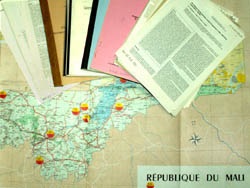
Centralized files: 1946 ->
The central files are considered to be the "heart" of the World Health Organization's archives. At the time of the Interim Commission of WHO in 1946, a "Registry" was set up to ensure that the documents produced and received by WHO were registered and centralized. This service was the predecessor of the current "Records and Archives" service.
This fonds paints a broad picture of the work of WHO since 1946 and represents a resource of considerable historic value, as it covers most of the health topics with which WHO has dealt since its beginnings. The fonds is divided into four chronologically distinct sub-fonds.
Centralized files, 1st & 2nd generations, Sub-fonds 1 & 2
From 1946, the mission of the "Registry", was to register and index documents produced and received by WHO. The two sub-fonds, commonly referred to as the 1st and 2nd generation files, originate from and reflect the archiving activity of this service, better known nowadays as "Records and Archives".
They contain documents dating from the beginnings of WHO and from its administration together with the first major programmes taken over from OIHP, UNRRA and from the League of Nations Health Section.
- Reference code : ARC010-1
- Title : Centralized files, 1st generation, Sub-fonds 1
- Date(s) : 1946-1950
- Level of description : Sub-fonds
- Extent and medium : 55 linear cm, microfilms
- Reference code : ARC010-2
- Title : Centralized files, 2nd generation, Sub-fonds 2
- Date(s) : 1950-1955
- Level of description : Sub-fonds
- Extent and medium : 35 linear cm, microfilms
- Accruals : No
- Conditions governing access : Open for consultation subject to the deadlines and restrictions in force at WHO.
- Conditions governing reproduction : The archives are subject to WHO author's copyright.
- Finding aids : Paper inventory
- Rules or conventions : Descriptive notice in conformity with ISAD(G) norm
Centralized files, 3rd generation, Sub-fonds 3
The "Records and Archives" service, also known as the "Registry" in the 1950s, processed a growing volume of documents as WHO and its public health programmes grew in importance.
Sub-fonds 3 faithfully reflects this growth and, as the contents of the inventory show, contains documents from the historic archives relating to these programmes.
- Reference code : ARC010-3
- Title : Centralized files, 3rd generation, Sub-fonds 3
- Date(s) : 1955-1983
- Level of description : Sub-fonds
- Extent and medium : 4.2 linear m, microfilms - 450 linear m, paper
- Accruals : No
- Conditions governing access : Open for consultation subject to the deadlines and restrictions in force at WHO
- Conditions governing reproduction : The archives are subject to WHO author's copyright.
- Finding aids : Paper inventory
- Rules or conventions : Descriptive notice in conformity with ISAD(G) norm
Centralized files, 4th generation, Sub-fonds 4
Like the first three sub-fonds, this fonds holds documents relating to all the health programmes which have been centrally managed since 1984, in the "Registry", which was renamed "Records and Archives" in 2003. Contrary to the paper archives of the other sub-fonds, sub-fonds 4 has an electronic inventory.
Because of the period covered and as material is being entered daily into this sub-fonds by the Records staff, most of the documents are not yet accessible to the public.
- Reference code : ARC010-4
- Title : Centralized files, 4th generation, Sub-fonds 4
- Date(s) : 1984 ->
- Level of description : Sub-fonds
- Extent and medium : 500 linear m, paper
- Accruals : Yes
- Conditions governing access : Open for consultation subject to the deadlines and restrictions in force at WHO
- Conditions governing reproduction : The archives are subject to WHO author's copyright. .
- Finding aids : Electronic inventory
- Rules or conventions : Descriptive notice in conformity with ISAD(G) norm
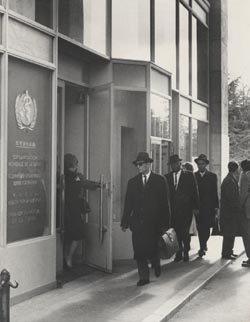
Photographic archives: 1951-1994
This fonds is divided into two distinct parts: the first sub-fonds is devoted to photographs taken in the field by photographers working for WHO, the second represents their unedited work.
Photographic archives, Sub-fonds photographs
At the beginning of 2004, a collection of black and white photographic prints together with the original negatives was discovered. The collection was officially transferred to the archives in May the same year, and is now being classified after having been examined by experts.
This sub-fonds is made up of photographs taken in the field by photographers working for WHO and covering subjects such as malaria, poliomyelitis and tuberculosis in different countries. Several distinguished photographers, including Marc Riboud, Robert Doisneau and David Seymour took part in these missions.
The collection is made up of more than 30 000 original prints dating from the end of the 1940s to the mid 1990s and is classified by WHO Regional Office and by health subject. It is the fruit of the files described in sub-fonds 2.
- Reference code : ARC012-1
- Title : Photographic Archives, Sub-fonds Photographs
- Date(s) : 1951-1994
- Level of description : Sub-fonds
- Extent and medium : 15.5 linear m, paper (photographic prints)
- Accruals : No
- Conditions governing access : Open for consultation subject to the deadlines and restrictions in force at WHO
- Conditions governing reproduction : The archives are subject to WHO author's copyright.
- Finding aids : Paper inventory, electronic inventory
- Rules or conventions : Descriptive note in conformity with ISAD(G) norm
Photographic archives, Sub-fonds photographers
In 2005, the work files of photographers sent to the field by WHO to cover health topics such as malaria, poliomyelitis and tuberculosis were officially transferred to the archives.
These files are made up of the unedited work of some of the great names in photography, such as Marc Riboud, Robert Doisneau and David Seymour.
They include the negatives, contact plates, correspondence, travel notes and texts accompanying the photographs taken in different countries by these photographers.
This sub-fonds is of inestimable value; not only does it cover health topics in specific countries, it also represents the raw work of photographers in the field, before WHO chose the photographs represented in sub-fonds 1.
The files are currently being organized.
- Reference code : ARC012-2
- Title : Photographic Archives, Sub-fonds Photographers
- Date(s) : 1951-1994
- Level of description : Sub-fonds
- Extent and medium : 22 linear m, paper
- Accruals : No
- Conditions governing access : Open for consultation subject to the deadlines and restrictions in force at WHO
- Conditions governing reproduction : The archives are subject to WHO author's copyright.
- Finding aids : Paper inventory, electronic inventory
- Rules or conventions : Descriptive notice in conformity with ISAD(G) norm
Fond photos - List of files sorted by subjects Fond photos - List of files sorted by subjects
Fond photos - List of files sorted by Regional Office of WHO Fond photos - List of files sorted by Regional Office of WHO
Fond photographers - List of files sorted by the subjects Fond photographers - List of files sorted by the subjects
Fond photographers - List of files sorted by the photographers Fond photographers - List of files sorted by the photographers
Fond photographers - List of files sorted by the countries Fond photographers - List of files sorted by the countries
Fond photographers - List of files sorted by date Fond photographers - List of files sorted by date
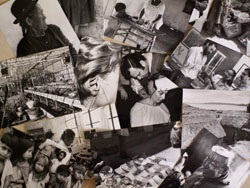
Archives on the construction of the Headquarters building: 1950 ->
This fonds, which covers an area outside the traditional framework of WHO activities, is of particular interest from the architectural angle. In 1959, the World Health Assembly launched an international competition for the construction of a building for WHO, which had so far been housed in the Palais des Nations.
This fonds include plans, photographs and documents relating to the competition, ranging from participants' projects to the actual completion of the building by the winner, Jean Tschumi, and his successor, Pierre Bonnard.
- Reference code : ARC017
- Title : Records relating to the Construction of the Headquarters Building
- Date(s) : 1950->
- Level of description : Fonds
- Extent and medium : 13 linear m, paper
- Accruals : Yes
- Conditions governing access : Open for consultation subject to the deadlines and restrictions in force at WHO
- Conditions governing reproduction : The archives are subject to WHO author's copyright.
- Finding aids : Electronic inventory
- Rules or conventions : Descriptive note in conformity with ISAD(G) norm
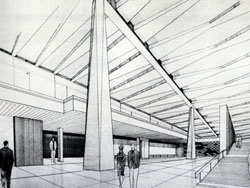
WHO media and films archives: 1953-1989
This fonds is from the WHO Media and Communication department. It contains the administrative and technical documents relating to the production, filming and distribution of films on health.
This fonds, which is being organized, gives an additional insight into and adds value to the films themselves, which are held in part by the Media and Communication department at WHO Headquarters and in part by the Swiss Cinémathèque in Lausanne.
- Reference code : ARC020
- Title : Records related to WHO Media and Films
- Date(s) : 1953-1989
- Level of description : Fonds
- Extent and medium : 3 linear m, paper
- Accruals : No
- Conditions governing access : Open for consultation subject to the deadlines and restrictions in force at WHO
- Conditions governing reproduction : The archives are subject to WHO author's copyright.
- Finding aids : Paper inventory, electronic inventory
- Rules or conventions : Descriptive note in conformity with ISAD(G) norm
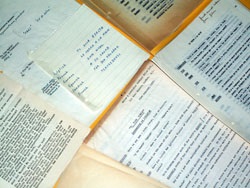
"Project Files" archives: 1945-1986
This fonds, which is classified by country and health topic, contains the documents sent to WHO Headquarters by the Regional Offices. These documents include mission reports and contracts for consultants sent to countries by WHO in order to report, first of all to the Regional Office concerned, and then to Headquarters, about a specific health situation, such as plague or cholera, in the country concerned.
This fonds represents the work carried out in the field and covers the majority of the projects and initiatives carried out by WHO from its beginnings to the mid 1980s.
- Reference code : ARC022
- Title : Records of the Project Files
- Date(s) : 1945-1986
- Level of description : Fonds
- Extent and medium: 1.25 linear m, microfilms - 70 linear m, paper
- Accruals : No
- Conditions governing access : Open for consultation subject to the deadlines and restrictions in force at WHO
- Conditions governing reproduction : The archives are subject to WHO author's copyright.
- Finding aids : Electronic inventory
- Rules or conventions : Descriptive notice in conformity with ISAD(G) norm
